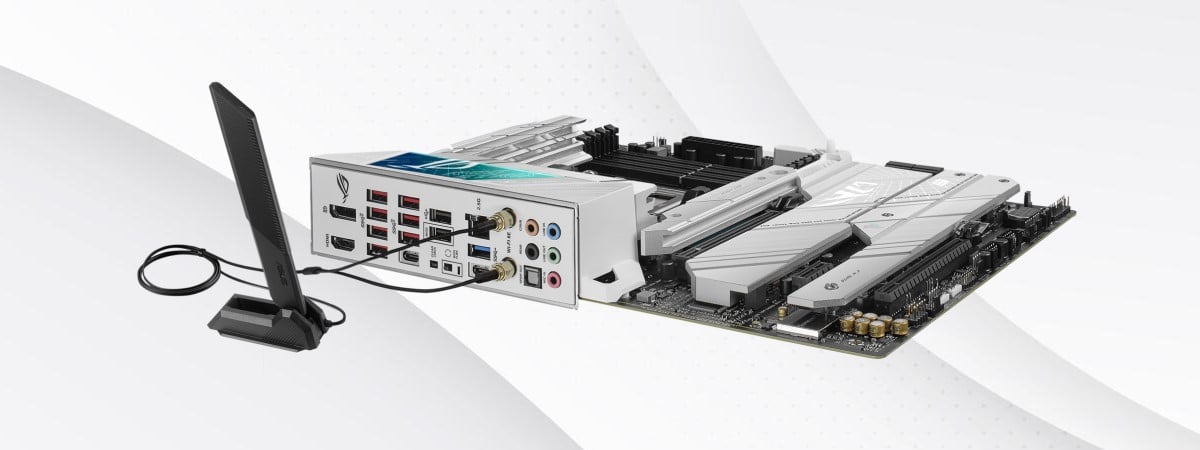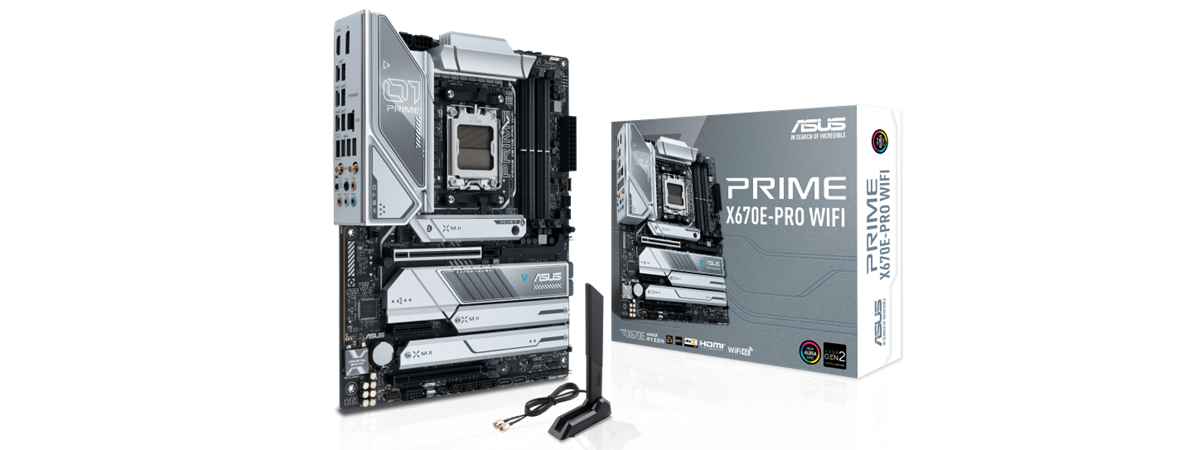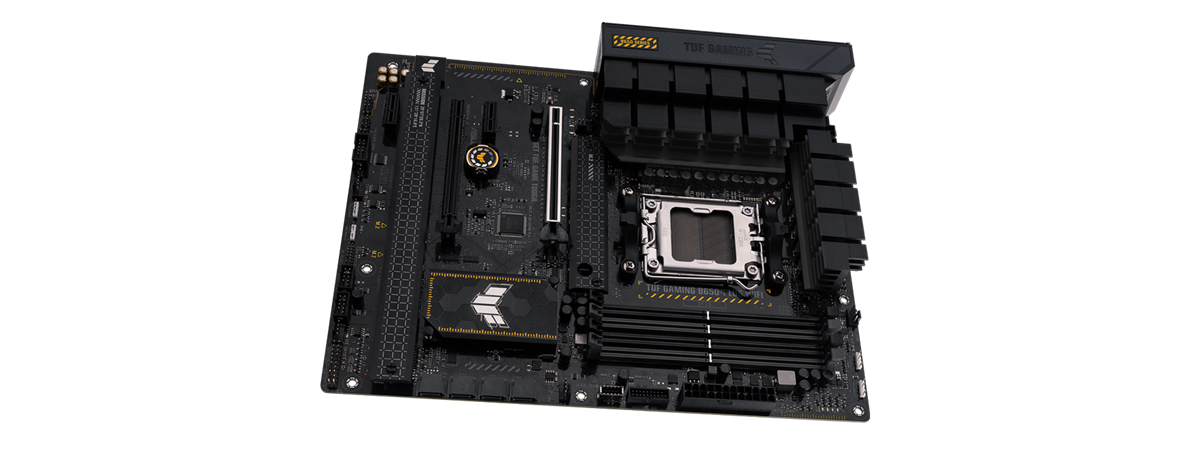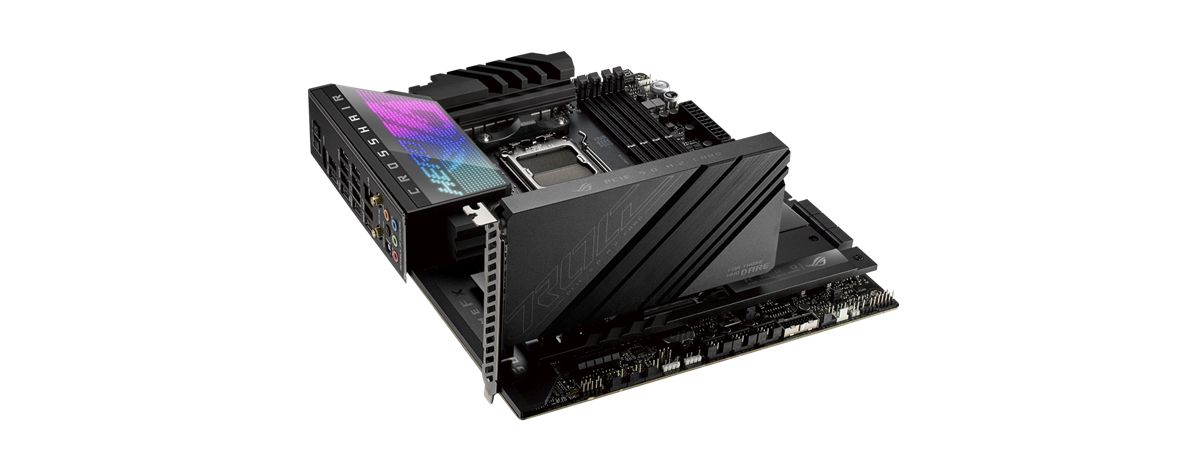
After the recent launch of AMD Ryzen 7000 processors, compatible motherboards are slowly but surely surfacing on the market. One of the most interesting ones is the new ASUS ROG Crosshair X670E Hero, a high-end motherboard equipped with PCI Express 5.0 and USB 4 ports that also bundles a lot of accessories. Though its price is quite high, about 700 US dollars, its performance and features are very attractive. Are you curious about this motherboard and what it can do? Read this review and find out whether it’s worth buying an ASUS ROG Crosshair X670E Hero for your next PC:
ASUS ROG Crosshair X670E Hero: Who is it good for?
The ASUS ROG Crosshair X670E Hero is the motherboard you should buy if:
- You’re upgrading to a Ryzen 7000 processor and want a gorgeous motherboard for it
- You want a high-end motherboard with PCIe 5.0 and USB 4 ports
- Intend to future-proof your computer
Pros and cons
These are the best things about the ASUS ROG Crosshair X670E Hero:
- It uses the brand new and powerful X670E chipset
- Comes with PCI Express 5.0 and USB4
- Compatible with extremely fast DDR5 RAM
- Lots of USB, M.2, and SATA ports
- 2.5 Gigabit Ethernet and Wi-Fi 6E connectivity
- Solid build quality and beautiful design
The only disadvantage of the ASUS ROG Crosshair X670E Hero is that its price is probably going to make a dent in your wallet.

Verdict
The ASUS ROG Crosshair X670E Hero is an excellent motherboard for any AMD Ryzen 7000 processor. If you’re considering building a brand new computer using a Zen 4 CPU, you want all the goodies you can get, including PCI Express 5.0 and USB 4 ports, and you have the money for it, then I highly recommend this motherboard. You’ll get top-notch performance, beautiful design, and solid build quality. On the other hand, if your budget is limited, it might be worth waiting for more price-accessible motherboards to come out before upgrading to the latest AMD Ryzen processors.
Unboxing the ASUS ROG Crosshair X670E Hero
As the ROG Crosshair X670E Hero is a high-end motherboard, its packaging looks premium and is made of high-quality materials. Painted in Republic of Gamers’ black and gray shades, and using red and orange for accents, the box is filled with details about the motherboard’s features.
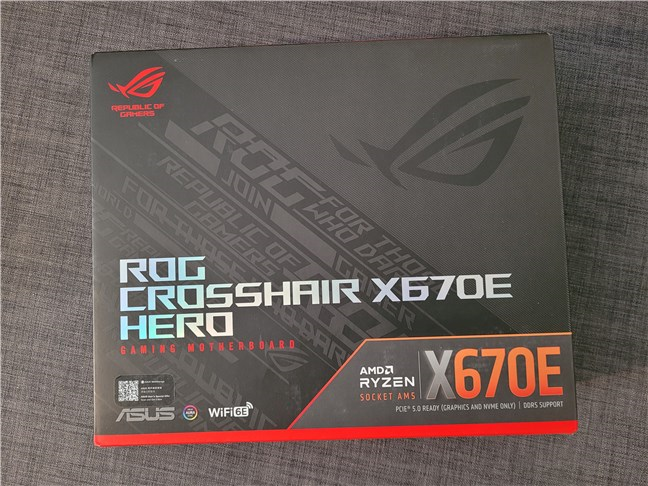
The packaging for ASUS ROG Crosshair X670E Hero looks great
The first thing you see when opening the box is the beautiful motherboard. And underneath it, you’ll find a huge number of additional components and accessories.
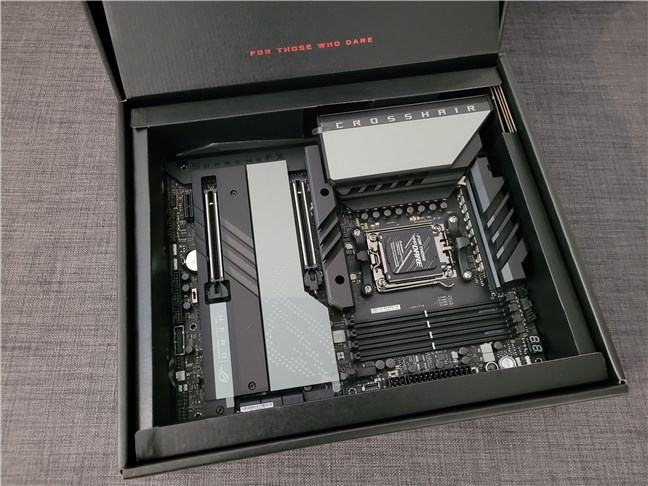
Opening the package is a pleasant experience
The list of bundled accessories and documents is incredibly long and impressive: cables (one ARGB extension cable, one RGB extension cable, four SATA 6Gb/s cables), a PCIe 5.0 M.2 card with heatsink together with an M.2 screw package, a thermal pad for M.2 slots, an ASUS Wi-Fi moving antennas kit, three rubber packages for the M.2 backplate, one rubber package for M.2, one M.2 Q-Latch package, 1 Q-connector, three M.2 Q-Latch packages for the M.2 backplate, a ROG graphics card holder, a ROG key chain, a USB drive with utilities and drivers, a ROG thank you card, and the motherboard’s user guide.
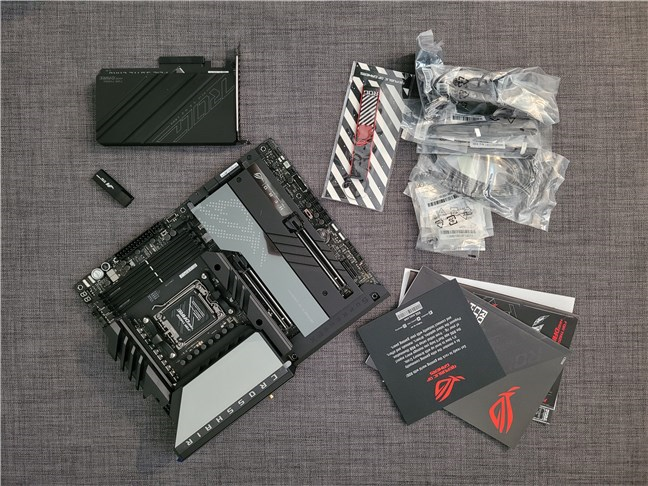
ASUS ROG Crosshair X670E Hero comes with many accessories
Thanks to the high-quality packaging and rich accessories bundle, unboxing the ASUS ROG Crosshair X670E Hero is a very satisfying experience.
Hardware specifications and design
It’s obvious right from the start that the ASUS ROG Crosshair X670E Hero is a high-end motherboard. Just one look at it reveals the attention to detail invested by the company’s engineers and hardware designers. There are large plates and heatsinks covering all the essential parts, and they’re not there just to make the motherboard look beautiful but also to help deliver outstanding performance.
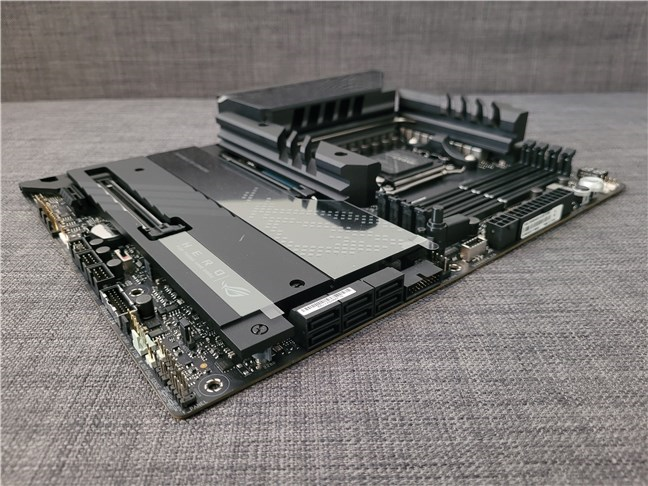
The motherboard looks great and has large heatsinks
What instantly impressed me when I unpacked this motherboard was the massive heatsinks covering the voltage regulator module (VRM) and the main M.2 PCIe 5.0 solid-state drive slot. Their height and weight are more than I’ve seen on any AM4 mainboard, and that’s great as it means that the ROG Crosshair X670E Hero is built to withstand even the most powerful and energy-hungry AMD Ryzen 7000 processor. That includes the top-of-the-line Ryzen 9 7950X, which can draw almost 200 Watts without even overclocking it!
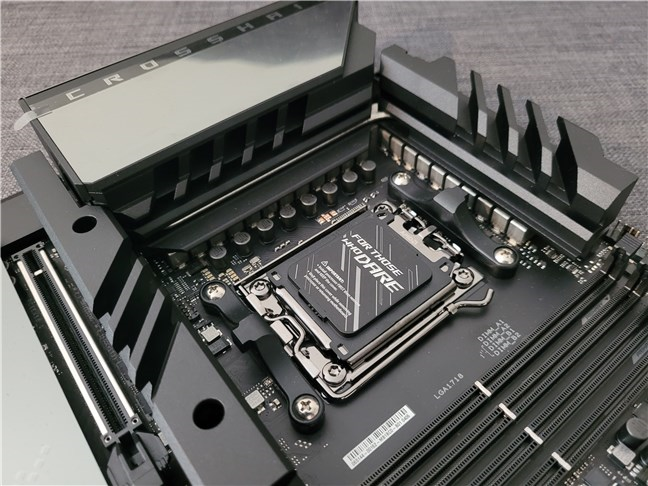
The VRM is covered by huge heatsinks
The power required by the motherboard and processor is delivered via three EPS connectors: a standard 24-pin ATX main power connector next to the DIMM slots and two 8-pin connectors positioned on the top-left corner of the mainboard. Additionally, right under the 24-pin ATX power connector, there’s another special 6-pin connector that you can use to deliver more power to your PCIe x16 slot (up to 60 Watts).
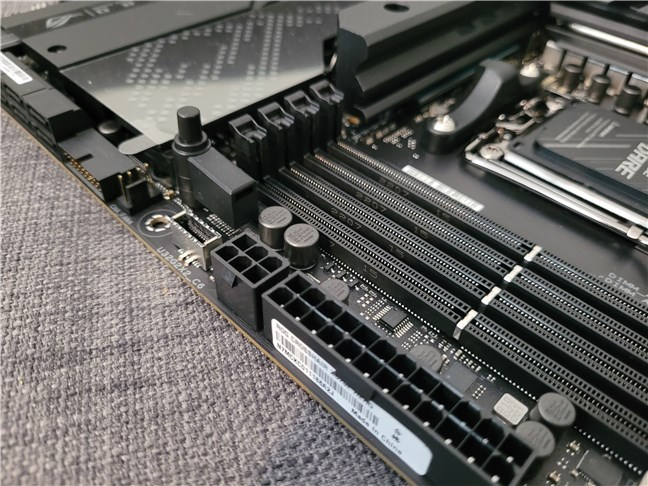
Motherboard power connectors
As the ASUS ROG Crosshair X670E Hero is designed for the brand new AMD Zen 4 processors, it uses the (also new) AM5 socket. This socket is not compatible with older AMD processors from the Ryzen 5000 or Ryzen 3000 families. The only CPUs you can mount today are the AMD Ryzen 9 7950X, Ryzen 9 7900X, Ryzen 7 7700X, and Ryzen 5 7600X.
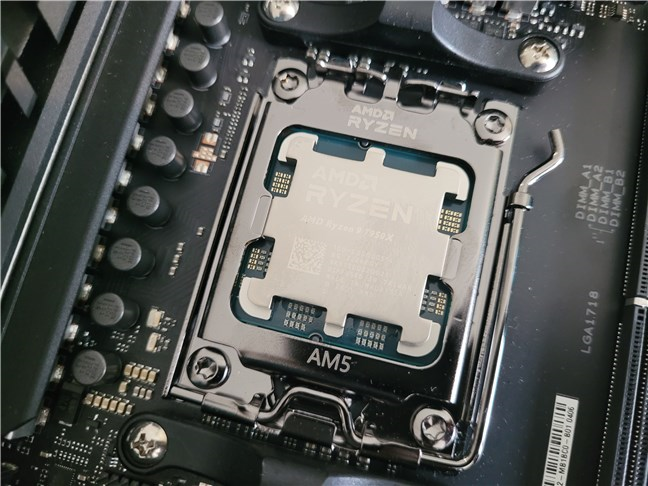
An AMD Ryzen 9 7950X mounted on the ASUS ROG Crosshair X670E Hero
In terms of memory compatibility and options, the ASUS ROG Crosshair X670E Hero supports only DDR5 and comes with four DIMM slots that can house a maximum of 128 GB of RAM. By default, the DIMM slots can run at default frequencies of 4800 up to 5600 MHz (in increments of 200 MHz). However, the motherboard can also use AMD EXPO-enabled memory which can run at 5800, 6000, 6200, 6400 MHz, and even faster.
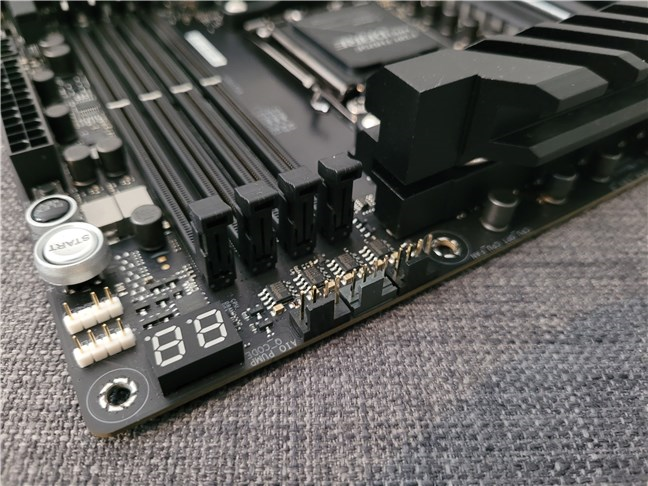
ASUS ROG Crosshair X670E Hero supports AMD EXPO RAM
While the X670E chipset inside the ROG Crosshair X670E Hero motherboard offers support for PCI Express 4.0, you also get PCI Express 5.0 via the processor lanes. The x16 slots (x16 or x8/x8) plus two M.2 SSD slots (x4) run on PCI Express 5.0.
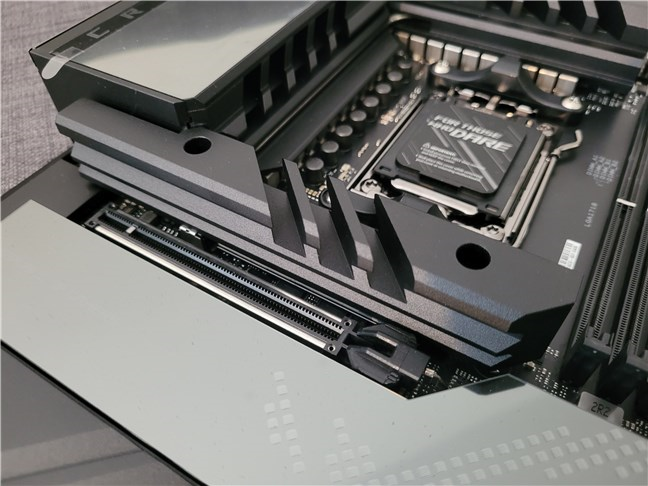
ASUS ROG Crosshair X670E Hero comes with PCIe 5
Then, there’s one x1 slot that uses PCIe 4.0, two additional M.2 SSD slots (x4) that support PCIe 4.0, and six SATA 6Gb/s ports.
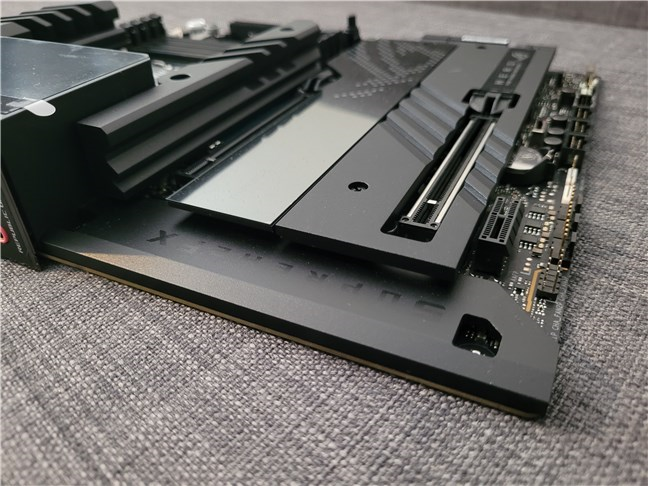
There are many M.2 SSD slots available on the motherboard
The motherboard also bundles a PCIe 5.0 M.2 card that you can use to add a fifth PCIe 5.0 SSD (x4); however, if you plug it into the second PCIe x16 slot, the first one will run in x8 only.
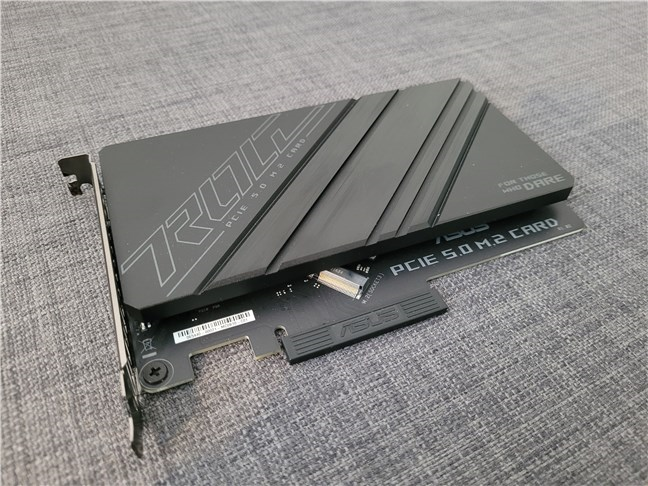
The PCIe 5.0 M.2 card bundled with the motherboard
Connectivity-wise, the motherboard doesn’t cut any corners. You get an Intel 2.5 Gb Ethernet card with ASUS LANGuard (protection against power spikes and fewer data transmitting errors). In addition, you also get 2x2 Wi-Fi 6E that supports the 2.4, 5, and 6 GHz frequency bands, plus support for Bluetooth 5.3.
For the audio part, you get ASUS’ ROG SupremeFX 7.1 Surround Sound High Definition Audio CODEC ALC4082. It supports stereo playback at up to 32-bit/384 kHz and up to 120 dB SNR (Signal-To-Noise ratio), 113 dB SNR recording input.
Besides network and audio ports, on the I/O panel, you also get two USB4 Type-C ports (Intel JHL8540), one USB 3.2 Gen 2x2 Type-C port, nine USB 3.2 Gen 2 ports (8 are Type-A and one is Type-C), and an HDMI port. Oh, and you also have a BIOS FlashBack and a Clear CMOS button.
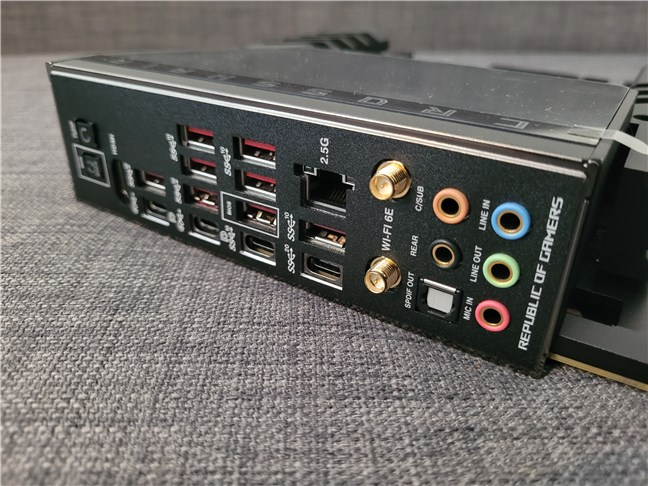
The I/O panel on the ASUS ROG Crosshair X670E Hero
In terms of fans and cooling, the motherboard includes many connectors: one 4-pin CPU fan header, one 4-pin CPU OPT fan header, one 4-pin AIO pump header, four 4-pin chassis fan headers, one W_PUMP+ header, one 2-pin Water In header, one 2-pin Water Out header, and one 3-pin Water Flow header. There are also additional USB headers available: one USB 3.2 Gen 2x2 connector (supports USB Type-C), two USB 3.2 Gen 1 headers (support four additional USB 3.2 Gen 1 ports), and three USB 2.0 headers (support six additional USB 2.0 ports).
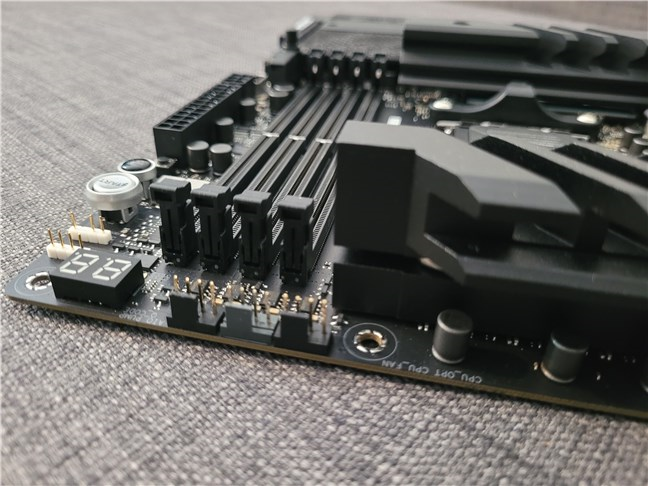
The bundle of headers is generous
If you’re a fan of RGB lighting effects, in addition to the Polymo Lighting effects on the motherboard itself, you also get one Aura RGB header and three addressable Gen 2 headers.
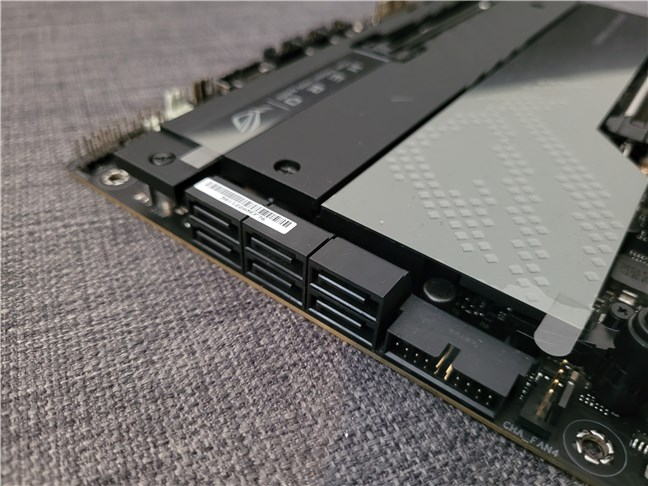
You get a lot of USB headers, SATA ports, and fan headers
If you want more details about the motherboard’s design and specs, visit its official webpage: ASUS ROG Crosshair X670E Hero.
The ASUS ROG Crosshair X670E Hero is a high-end motherboard with a solid build. And, on top of looking good and massive, it offers all the good things you’d expect from the next generation of computer tech: support for PCI Express 5.0, USB 4, and a lot of expansion options.
Turn the page to find out what the ASUS ROG Crosshair X670E Hero motherboard can do in benchmarks paired with the AMD Ryzen 9 7950X and the AMD Ryzen 7 7700X processors.


 29.09.2022
29.09.2022 